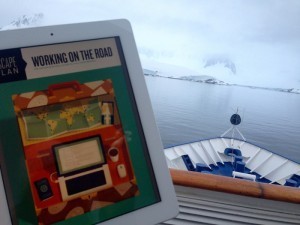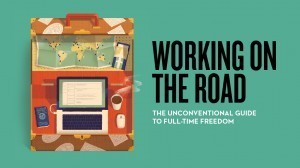Lisa Niver's Blog: We Said Go Travel, page 331
February 17, 2015
196 Countries to a Better You
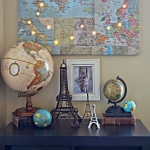
Even if you’ve only got a thousand dollar limit on your credit card, you better put some of the loose change from your pockets aside in a piggy bank for a travel fund.
Travelling isn’t just about seeing the world, or adding another postcard to your collection; it’s about getting into the nitty-gritty-but-sometimes-luxurious experience that is discovering yourself. The number one make-or-break situation for couples? Travel. The best way to remind yourself you are just one of the billions of people in the world? Travel. A sure fire way to make memories (both good and bad)? Travel.
There are 196 countries on this wonderful, beautiful, and diverse planet (including Taiwan). You live in one of them! That means that there are 195 places that you have yet to visit, but hopefully some of those are already checked off of your list.
When you travel, you figure out what kind of individual you are. Do you like to sightsee, or do you like to find the hidden, hole-in-the-wall local hot spots? Do you stick to food you are used to eating, or do you try the native cuisine? What about accommodations and activities: do you splurge on a fancy hotel for comfort and sacrifice that dinner cruise in the Bahamas? Pictures? How many? Do you want to look back at where you have been, or live in the moment?
Even if you never thought of those questions before, they immediately become apparent when travelling. But that is the glory of seeing the world- it teaches you things you never knew about yourself! Maybe you always thought you would be too scared to try fried bugs, but after seeing a local casually munching on grasshoppers you gave it a whirl. Now think about how many more experiences you have opened yourself up to that you normally would have snubbed up your nose at! One thing you have to be certain of when traveling is you can’t be scared of yourself. Let yourself delve into new possibilities and experiences!
Maybe travel is the biggest test for couples due to the stress of red-eye flights, smelly public transit rides, sweat on a hot summer day, cramped hotel space- you get the idea. The great thing for couples that undergo that test, regardless of the relationship outcome, is that the knowledge they gained of themselves either helps them find a better match in the future, or strengthened their bond with their significant other. Likewise, both individuals walk away with fantastic memories of the places they saw, things they did, and interactions they encountered. Maybe it will be a frustrating-at-the-time-but-now-hilarious story about accidentally dropping the camera into the Grand Canyon, or maybe it’ll be amazing, rewarding walk on The Great Wall of China. It is all about the memories.
So the real question then becomes not can you afford to travel, but where will you travel? Life is short people, 196 countries, and roughly 10-30 vacation days a year leaves limited time to go see the world. Everything has a price tag, and there is always going to be something you won’t be able to afford, but travelling should not be one of them. Think of it this way, at least while you are hard working on a DIY project to save some bucks, you will be reflecting on how awesome that trip to Ireland was, and how you can’t wait for your upcoming vacation to the Galapagos Islands. We Said Go Travel- so get going already!
Thank you for reading and commenting. Please enter the Inspiration Travel Writing competition and tell your story.
The post 196 Countries to a Better You appeared first on We Said Go Travel.
February 16, 2015
Brave at the waterfalls in Luang Prabang, Laos

We woke up the morning after hangover day to get on the bus. Alex and I went downstairs for our last Central Backpackers breakfast which took half an hour to come and almost made us miss our bus. When the bus got here, Alex couldn’t find his shoes anywhere, so we had to leave without them. We took a crappy bus to the train station. It was packed, smelled, rattled, and made so that only a baby could sit comfortably in the seats. Alex was like Bigfoot compared to this bus. His smell was the only thing that made us fit in with the crowd that all looked as though they had been on this bus for years.
We arrived at the train station five minutes outside of town and waited for our “VIP” bus to take us from Vang Vieng to Luang Prabang. By the way, in Laos you basically don’t pronounce the last letter of any word ever. We got on our “VIP” bus which was a little bit more comfortable. Then we met this girl from Vancouver who lives in Calgary now to work, but is originally a gypsy from the Dominican Republic. I think. We talked to Rosa, this girl, for the next 8 hours on our bus. Finally got to Luang Prabang and ended up staying in this crappy place downtown for 40000 kip a night each. It’s incredibly loud but we have our own bathroom and beds. I haven’t slept more than about 4 hours each night but I figure I’ll be tired enough tonight to get some rest.
We woke up the next morning after the bus to Luang Prabang, and caught a bus at noon to Kuang Si Falls which is a place with a whole bunch of waterfalls and small pools to swim in. This part gets pretty interesting, and I don’t want you to freak out Mom. I’m going to include a picture, I am fine now and it is nothing serious at all. When we arrived at the waterfalls we went to the biggest one at the very top and even though we weren’t supposed to, we jumped off of the rocks directly into the waterfall. So far so good. Next we walked down to a smaller one and jumped in. No problems here. Swam around a little bit. Then went to a smaller one with a rope swing. Alex went first so that I knew where to land. When it was my turn, I took a few steps, jumped from the tree, and when my full body weight caught on the rope, it came back and hit me so hard in the eye that it split my eye lid about 3/4 of an inch. Now, that sounds a lot worse than it actually is. When I got out of the water everyone freaked out and thought I hit a rock because it was gushing blood. I think I scarred a kid about Tyler’s age for life. We groped our way up a hill covered in really long grass to a cafe on the hill and got ice and a napkin. I just put pressure on it since our bus didn’t leave for three hours.
Coincidentally, on our bus was a German Gynaecologist who offered to stitch it up back at her hotel. (Tyler, make sure you ask mom what a gynaecologist is). We arrived back at her hotel and at the very last minute, needle in hand, she jumped ten feet in the air and declared that she would just tape it shut instead. Much to Alex’s disappointment as he had been standing there patiently, I-phone in hand, waiting for his moment for a clear cut shot, she taped it shut with some weird thing down the middle of the eye. This is a picture, I’m hoping you read all of this before you see the picture. I took a few pictures of it, I even smiled nicely but I think that this one looks the greasiest and worst so I picked it.
Thank you for reading and commenting. Please enter the Inspiration Travel Writing competition and tell your story.
The post Brave at the waterfalls in Luang Prabang, Laos appeared first on We Said Go Travel.
A Sacred Light in Spain

When I entered the cathedral, everything that was on my mind quickly slipped away. I forgot that my morning train had been late, and that I had to wait in line for a few hours. I forgot that my hostel’s quality was sadly only worth the ten euros I had spent on it. I forgot the events that had prompted me to start traveling, along with my worry that I would never recover who I had been. I forgot that I was a minor traveling alone for the first time, and I forgot that I was scared.
La Sagrada Familia—certainly striking on the outside, but not so out of the ordinary that it warranted its enormous reputation. When I gazed at it as I waited in line, a large part of me was missing the little town of Cuenca and how I could talk to locals instead of fighting my way through tourists and keeping watch over my backpack. But then I entered the building, and I felt like Alice in Wonderland: tiny and confused and overwhelmed.
It was unlike any other cathedral I’d been in, wildly different and simply staggering. I had been expecting beauty, and awe-inspiring carvings, and the standard Gothic dim and dramatic lighting. But this had pure white columns stretching up and up and up, lit by sunlight streaming through stained-glass windows that tinted the light into every color imaginable.
I forgot my worries and my nervousness. I even forgot to be ashamed that I was a tourist, and snapped pictures left and right. I was grinning like an idiot and even lay down in one of the pews, staring up as the colors changed with the sun’s movement. Simply put, that place was magical to me.
When I finally exited the cathedral, its impact stayed with me. I became emboldened. I felt the sun hitting my face and imagined that it was passing through me, tinted by my thoughts the same way it had been tinted by the windows’ colors. And I knew that I didn’t need to recover who I had been, because I was someone different now.
The little town of Cuenca did not teach me that I could be strong when I was alone. Cooking for myself did not teach me that I didn’t have to depend on anyone. Figuring out the metro of a foreign city did not teach me independence. But one day in a striking cathedral taught me all that and more. I had time to reflect on my past and my future, and that time let me look back at my accomplishments and realize that I didn’t need to be brave—at least, not brave according to my old definition.
I didn’t need to perform great acts of bravery. I didn’t need to complete my travels without crying, making mistakes, or asking for help. That didn’t make me brave. With all I’d been through, what made me brave was standing up in the morning. It was brave for me to decide to travel to Spain, and embark on a wild journey all by myself. I already had the courage to carry on when it would have been so easy to stop.
Bravery no longer meant heroism after I watched the light in that cathedral. Or maybe it did, but I now defined heroism differently. I know that I am brave for pushing through and continuing to maintain myself, and maybe even improve.
The cathedral taught me that I was already brave.
Thank you for reading and commenting. Please enter the Inspiration Travel Writing competition and tell your story.
The post A Sacred Light in Spain appeared first on We Said Go Travel.
How to Travel the World – and Make Money Doing It
Do you crave a life of travel and adventure, but aren’t sure how to make ends meet while doing it?
Join the club.
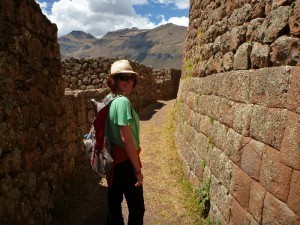
In 2006 when I was 30 years old, I was busy running a successful financial planning practice in Canada. I had all the accoutrements of an enviable lifestyle; I had a great income, a sports car, I lived in a nice loft, I had a busy social calendar, and more.
And I was miserable.
I wanted more out of life; since childhood, I craved to travel the world and explore different cultures, climates, and lifestyles. I took annual vacations, but more often than not, I returned from a simple 1-2 week holiday with more questions than answers about the place I visited.
I wanted to climb the mountains of the world, volunteer around the world, and break bread at dinner tables….around the world. I wanted to understand how children played, how cultural values differed by country, and bask in the sunshine when chilly Canadian winters prevailed.
Finally, realizing I couldn’t wait another 30 years for a conventional retirement to play out these dreams, I sold everything I owned to travel the world – full-time.
Initially, I had no idea how I’d make ends meet and thus how long I could sustain a lifestyle abroad; could I find jobs around the world? Was there online work available? Was there a business I could run that would enable me to travel?
Yes!
As I traveled the world full-time over the next eight years, I not only found my own niche as a freelance writer and blogger, but I also discovered innumerable ways to work on the road and live a fulfilling life abroad. I met dozens of people who were traveling and living around the world on a wide variety of budgets with an even wider variety of careers.
Who knew?!
Following is an excerpt from the recently released Working on the Road: The Unconventional Guide to Full-Time Freedom:
Working on the road is not reserved for the super-wealthy or hippy backpackers. Most people who work on the road are surprisingly “normal”. It’s about lifestyle freedom and creativity; i.e., you design the life of your dreams, and find a way to make it all financially sustainable. It incorporates different modalities of travel, work, and business; no two situations are identical.
It’s not quite as difficult to do as you might think; there’s a wide range of possibilities for how, where, and when you can work on the road.
Are you one of these people?
You crave a career sabbatical, but still want or need some form of work and income to keep you occupied and the bills paid.
You are a successful entrepreneur, wondering if it’s possible to run your business—with less overhead—from abroad.
You are a gap year student, looking to travel the world for a year or two after school and earn some money along the way.
You are a retiree who isn’t ready to retire; instead you’re looking to “re-engage” the world (and/or supplement a meagre pension).
Or you might be a lost soul, wondering why your inner voice keeps telling you something is amiss and that there’s so much more out there in the world for you. (A lot of people—myself formerly included—fall into this category).Single? Married With Children? Retired? Doesn’t Matter
Dyanne is a woman “of a certain age” (she admits to six or so decades) who took her small pension to Southeast Asia, where she taught English as a second language part-time and travels extensively.
Rachel and Greg have traveled the world full-time since 2007…with their five (now six!) children.
Samuel and his girlfriend Audrey have been nomadic for over five years, teaching English in South Korea and traveling between contracts.
Sean is a full-time telecommuting employee for a company in Melbourne, but he’s never been to Melbourne. Instead he has lived and worked in North and South America the entire time he’s been working with his company.
Jonathan is a wildlife illustrator with a venerable client list who has been living location independently with his wife Lea and (now) two children since 2007.
Tiffany and Chris have been professional travelers for the last 10 years, getting various jobs around the world.
Grasya has developed a location independent career from her home in the Philippines, and recently relocated to Thailand for a while.
SoulTravelers3 are a family of three who travel full-time and live for under $25,000/year. The daughter is trilingual as a result of attending schools in Spain and China, and she even has her own location independent business as a language tutor.
Deb and her husband are in their 40s and travel full-time, landing jobs along the way as they go with a decent set of transferrable skills, networking, and research.
Earl has traveled full-time since 1999, working on cruise ships, teaching English, and leading small group tours, in addition to running his travel blog for the last five years.
Jeannie got laid off in 2010 and took the opportunity to travel the world and curate her writing skills. Years later she’s still going strong; for two years she complemented her location independent writing income by teaching English in China.
These people above – and many (many) more are interviewed and profiled in Working on the Road: The Unconventional Guide to Full-Time Freedom. They share their dreams, daily routines, challenges, and even their detailed costs of living on the road – which are surprisingly less than what most people spend to live in one place.
The guide also profiles various career options (both location independent and otherwise) and shows you how to get started. It gives you tools for running an online businesses smoothly, and tips for how to organize your finances and embark on a travel lifestyle. There are checklists, information on visas, insurance, and a healthy dose of inspiration from people who are living this life and wouldn’t have it any other way.
When I tell people about my lifestyle, the most common response I get is “Wow! I’d love to do what you do, but I can’t. How do I even begin?” Working on the Road answers that question and shows you how to create the life of your dreams. It’s not always an easy road (especially at first) – but it’s possible.
What do you want to do with your life?
Check out Working on the Road: The Unconventional Guide to Full-Time Freedom for more information and to get your own copy at a special introductory rate saving you up to $50.
Welcome to your new life.
The post How to Travel the World – and Make Money Doing It appeared first on We Said Go Travel.
February 15, 2015
My Diary in India
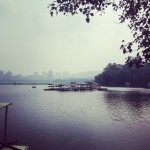
So I finally decided to muster all the courage I got and opened this word document. Yes, neither did I open the once beloved notebook whose pages have turned yellow while it waited for its indifferent owner. Nor I could find that blunt pencil from the once gifted pencil box. Those days are long gone. I have moved on into a more technology savvy and a much sophisticated world. Therefore now when I attempt to write this point of view, I expect it to be complete this time. No matter how many times I have to thwart my window dwellers, a pair of pigeon’s attempting to enter my room through the large floor to ceiling glass window or my maid’s constant nag to whether I need more condiments in my dal or not. I am going to finish this time, undaunted by the numerous incomplete ones left in the document’s folder in my small 12 inch office laptop.
I have been long gone. Lost perhaps, in this fast paced city called Mumbai. The city welcomes you with its arms wide open. It then engulfs you in a second and overwhelms you with all the surprises. Being the late bloomer, well that’s me – I am writing this after one long and eventful year after shifting here. When you live in a small apartment in a high rise overlooking a slum in a city with 12 million people, you are bound to reflect one day. Well, that day has come for me. From the untimely screeching on the brakes by the local Best buses on the road next to my tenth story flat, to the rhythmic gutergoo of the nonchalant birds, this place has taught me persistence. They taught me that the life is going to test you, fail you and even applaud you. But you need to move on. Never inert, just like the city winds which even in the sweltering heat will lift off your worries with a single swoosh. The roads may be narrow, broad or cavernous, but you need to drive ahead. At times, you apply brakes, but mostly run past through them, as the time is most precious. It is the life’s investment which is quickly dwindling. Be like the stubborn pigeon, ever persistent. Not a single day has passed when I have not had a joust with the pair for my little space in my own apartment! The incessant rains here will make you in love with the city. They will tease you, please you and make you marvel over their spontaneity that you will want to be like them.
Much have been explored, yet there is enough left to explore for a lifetime. This city is a magician and it never fails to amaze you with its tricks. It a constant discovery while I continue to live in its embrace.
The past is gone. And so will the future, if I keep looking behind. This is my new home and I am absolutely in love with it; for now.
Thank you for reading and commenting. Please enter the Inspiration Travel Writing competition and tell your story.
The post My Diary in India appeared first on We Said Go Travel.
Mountain Gorillas in the Jungles of Rwanda, Africa
With barely a sound the 160 kilo/ 350 pound gorilla walked right in front of me on the jungle hill side. Mountain gorillas only exist in high terrains of south western Uganda and neighboring Congo and Rwanda. For some, having the opportunity to hike to a family of mountain gorillas is the trip of a life time. I was pinching myself that here I was standing next to more than a dozen gorillas in Volcanoes National Park in Rwanda, Africa.
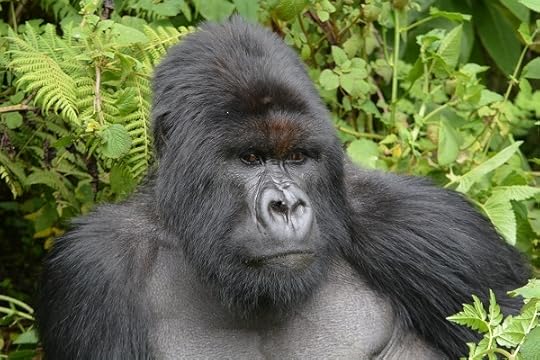
Mountain gorillas were hunted almost to extinction and are a critically endangered species. Within Volcanoes National Park there are eighteen different groups of gorillas.
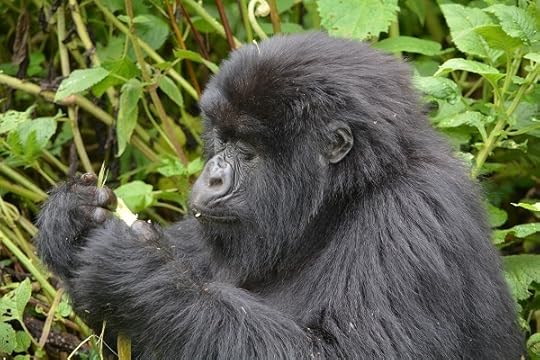
Eight are observed solely by researchers and ten of the groups are the groups visitors are allowed to be guided to. We were assigned to be led by our guide Eugene to the Umubano group which had thirteen members.
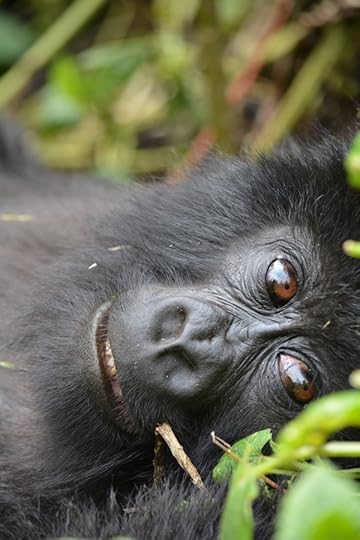
Gorillas are considered babies from ages zero to three, juvenile from ages three to six, adult ages six to eight and after age eight females are mature enough to start reproducing. Gestation period is for nine months and female gorillas will usually have about six babies in their lifetime.
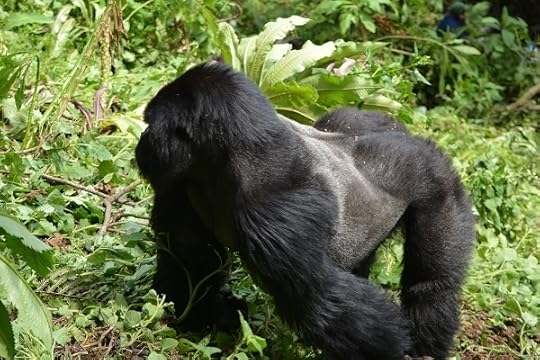
Around age twelve the black back of a male mountain gorilla will turn silver, giving them the revered title as now being a silver back.
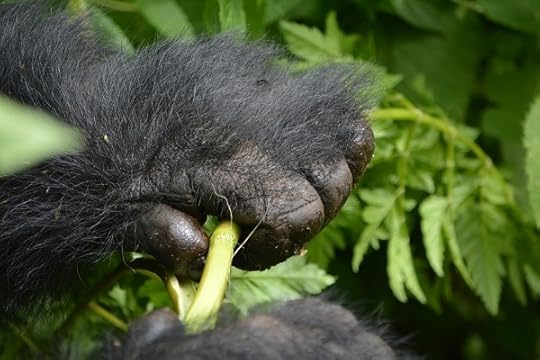
For diet, gorillas are vegetarian consuming around 2000 different species of plants. An adult will eat about 30 kilos of vegetation a day and they get all their water needs from the plants they eat. Gorillas make a new nest for themselves to sleep in every day, usually on the ground and will start constructing it around 5 pm or so.
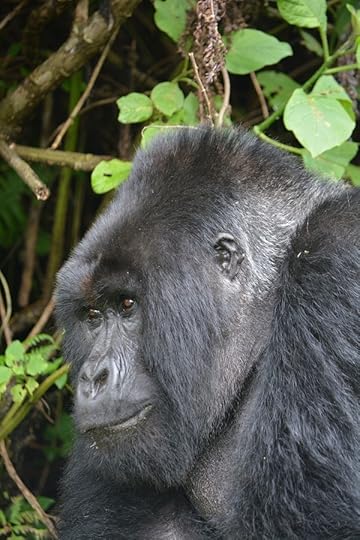
With their immense strength, visitors are often nervous to be in the jungle with these wild animals. Rest assured, the gorillas usually want nothing to do with you. They are too preoccupied with feeding, socializing and taking care of their babies. You are with guides, guards and trackers the entire time who are familiar with all of the gorillas. As long as you do what you guide tells you to do and do not use flash, (which applies for almost all wildlife photography in Africa) you will have an amazing time.
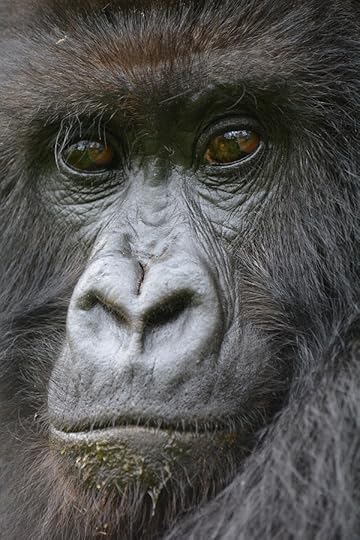
I couldn’t imagine having gone to Africa without having had the experience observing mountain gorillas. Looking at the faces and reactions of people when they come back from sharing the space with these gentle giants, they are impacted. Viewing wild gorillas changes you. Eugene, our guide thanked us all for coming and told us how much our park fees are instrumental in helping the gorilla population increase. The park can pay for gorilla doctors and if an animal does get sick, usually the medicine cost a minimum of $1000.
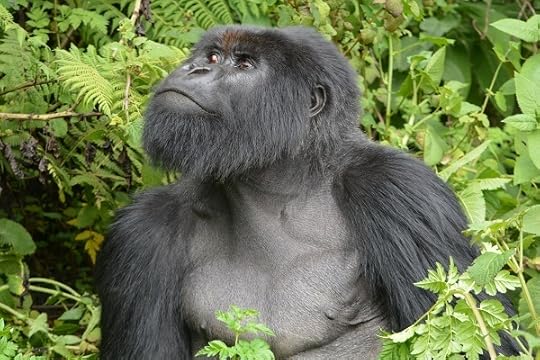
If you want to help conserve mountain gorillas – go see them for yourself. In Rwanda it appeared that the park fees were being put to good use as poaching was down and gorilla numbers have increased from 500 to 900.
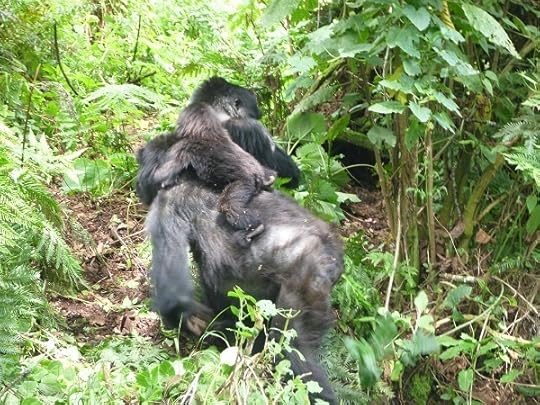
With these fees the park can continue employing rangers who patrol and monitor for poachers. Among our group, some people had chosen to hire a porter (someone who will carry your bag) for the day. Eugene did not say whom specifically, but some of the porters who were hired used to be poachers in the park. Now instead of killing gorillas, they were earning an income from tourists coming to see the gorillas in a safe environment. Learning that around us were would be poachers that were now accepted and welcomed as porters, really drove home to me how impactful responsible tourism combined with effective leadership and park management can be. Seeing how the park was being run gave me hope that the mountain gorillas may have a chance to keep striving in these jungle hillsides.
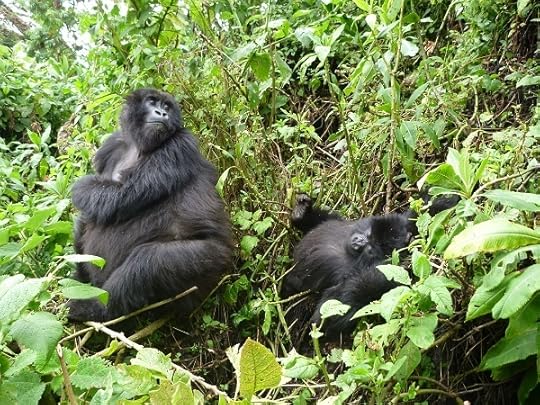
The opportunity to view gorillas in their home was a fairytale-like adventure. Hopefully the conservation effort will continue to move forward in such a way that gorillas never become animals the next generation can only read about in a fairy tale book, but hike to for themselves and view these animals striving in their home as the magnificent creatures they are.
* * *
For more information:
We stayed at a church mission called Centre Pastoral Notre Dame de Fatima. It was very nice, clean and well located.
The post Mountain Gorillas in the Jungles of Rwanda, Africa appeared first on We Said Go Travel.
February 14, 2015
Splashing into 2015 in Strangford, Ireland
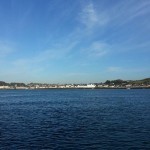
2015 with a splash in Strangford
Sharon Charity
The man beside me on the slipway is jumping from foot to foot in his blue board shorts, silver hair and goose-pimpled suntan. ‘At last, a real woman,’ he says as I look down at the green, soupy water of Strangford Lough. I’m wondering if the New Year’s Day harbour dash is a plunge too far in my faded purple one-piece and old hiking trainers. All around us people in wetsuits, swimsuits and dalmatian onesies are shrieking and slapping themselves. About a foot behind us the car ferry clanks its last passengers on board.
‘Three, two, one’ says the woman in a wetsuit and tutu, and suddenly people are splashing into the water, including board-short man who is front-crawling rapidly across the 80-metre stretch. I lower myself in, knowing it’s going to be colder than anything I can imagine but poleaxed by the icy needles and the harsh grasp that forces my lungs shut. I stand up for a few seconds and look back, wondering whether paramedics are needed. But I see my two kids, standing on the beach and waving and force myself forwards into the water.
Exactly six seconds later, fire spreads over my skin and suddenly the deathly cold is replaced by a feeling of incredible aliveness and happiness. Saskia and Danny are leaping around waving and cheering and it’s a big role-reversal as for once in my life I’m the one in the race not the one holding the towel. I plod on in a steady breast-stroke (Salomon hiking trainers hold a lot of sea-water) until after only two or three minutes I’m out, impervious to cold, skin hard and smooth and wide, wide awake.
Strangford is a picturesque village in County Down, on the shore of Strangford Lough. Its New Year’s Day harbour dip is an annual event, with mulled wine, music and hot food to follow in The Cuan, the seaside village’s impeccable inn. Before plunging into the lough I had a plate of the crispest, freshest scampi, fished in nearby Ardglass.
The inn and the town are no strangers to scenes of drama, indulgence and excess. Just up the road is Castleward, which became Ned Stark’s Winterfell in Game of Thrones. Sean Bean and the entire Baratheon family, complete with the unbearable Joffrey, stayed at The Cuan while they were filming Series 1.
We rented a house, No. 42, for three nights via holidaylettings.com. Just a two-minute walk from the centre of the village, it meant we could welcome the New Year in the pub, singing Auld Lang Syne in a huge, happy circle and joining the singer at the microphone for a family chorus of ‘Oliver’s Army’.
For the whole family, this was the perfect plunge into 2015. The day was crowned beside a roaring fire in a local pub, the Hole in the Wall, where Danny roared like a lion as we watched the mighty Tottenham Hotspur beat Chelsea in a 5-3 rout.
Thank you for reading and commenting. Please enter the Inspiration Travel Writing competition and tell your story.
The post Splashing into 2015 in Strangford, Ireland appeared first on We Said Go Travel.
Ecuadorian Amazon Inspiration
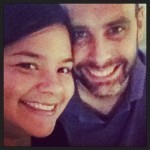
As the result of a devastating brain injury sustained as a teenager, I am fortunate to still be alive. However, this ultra rare anomaly did so much damage that I was essentially written off, told that I would never accomplish any of my many dreams or even take a step under my own power. Day in and day out, “experts” bombarded me with the concept that I was now relegated to a limited life that consisted of watching television while lying in bed or sitting in a wheelchair. I would not go to college, I would not be able to do any kind of job, no woman would ever take any interest in me, and a family of my own was out of the question. I had a simple choice to make, either listen to strangers tell me everything I cannot do, or listen to my heart and accomplish more than they could possibly imagine. I chose the latter. There is simply too much to see and do in this world to just reside myself to a life of hospitals and caregivers.
Growing up I dreamed of exploring exotic lands, finding hidden treasures, and solving age old mysteries. I poured over books and documentaries that detailed such adventures. However, of all the places I studied, I was drawn to one place in particular, the Amazon. The idea of such a vast and untamed place fascinated me. I dreamed of trekking through deep jungle that no Westerner has set foot on, seeing animals that are unknown to science, and stumbling across ancient lost cities. There is no way that a brain injury will stop me from doing just that.
Hard work and pain have become my daily companions as I struggle forward in my recovery. With every wobbly and rigid step, I know that I am that much closer to going to the place I have dreamed of since I was a child. When I fall, I pull myself up and keep pushing no matter how bad it hurts. My current surroundings might be concrete and buildings, but in my mind I am surrounded by lush, green foliage. I can hear the noises of jungle when I close my eyes and I can smell the hot, musty air. That keeps me going. That keeps me pushing.
As time has passed, I have achieved goals that I was told were unattainable. I have had to learn to face fears and overcome nearly insurmountable odds. I have a Masters Degree and a well paying job. I am even fortunate enough to be married to a beautiful Ecuadorian woman and we have a family together. It seems that my course has been set since my wife’s native country is exactly where I have been longing to go. My goal is to show my children that dreams do not have limits set upon them. I have learned that the only thing that can hold me back is myself. I know very well what I am capable of, which is being in peak physical condition, and I know very well that I will continue to achieve my dreams.
Though I have not set foot in the vast Amazon jungle yet, I will. I will make my way through the jungle under my own power and as I am doing so I will be all the more appreciative of where I am at because of the long and winding road I had to take to get there. I find it somewhat strange that a remote and isolated place that I have yet to set foot on inspires me so much as to keep trying hard every day, but it somehow does.
Thank you for reading and commenting. Please enter the Inspiration Travel Writing competition and tell your story.
The post Ecuadorian Amazon Inspiration appeared first on We Said Go Travel.
February 13, 2015
Life in the Deep Freeze in Sweden

Life in the Deep Freeze in Sweden
My vision of hell has often been snowy and icy. It’s not a conventional vision of hell as visions of hell go, but it’s mine. The only possible thing that could make it worse, in my imagination, would be to be trapped in snow and ice, and for an accordion player or a harpist to show up. That would make it a sort of super hell.
Temperatures in Halsingland, Sweden plunged to minus twenty-two last week. It was all new to me. I was anticipating the worst. I am unfamiliar with such extremes of cold. I’m Irish. Our climate is temperate. And damp. In my family we have a running joke that whatever time of year it is, it is probably about twelve degrees outside. So, it might be twelve degrees and raining, or blowing a gale, or it might be dry and sunny. In any case, it is liable to be about twelve degrees. In Ireland, the difference between winter and summer, is the number of hours of daylight you get with your twelve degrees.
For the Irish snow and ice means chaos. Travel is often severely disrupted. Schools close. Parents have to take the day off work. Severe weather warnings are issued and getting anywhere becomes a magical mystery tour, with detours and sagas about how long it takes to get anywhere by comparison with the norm. One might get to work, or one might not. Snow is trauma. Ice is drama. We simply can’t cope. We dont like it and we talk about it alot. It perplexes us. We shake our heads in disbelief. We resort to feeding the birds as a great act of heroism, a show of our own sense of agency, defiance and fighting back. ‘Yeah. Take that in the eye, Snow!’
The Irish tendency therefore, is to sit inside, light the fire, look out at it all, consider it a novelty for a day or two and just wait for it to be gone. The ‘winter’ passes in a day or two, when, or indeed if, it comes at all.
In Halsingland, I felt like I was Alice and that I had come to, miniaturized, on top of an old fashioned Christmas cake. When I was a child, the Christmas cake always had a snow scene of icing. Great drifts of hard icing, onto which plastic snow-covered pine and yew trees were stuck… and suddenly here I was, tiny, gob smacked and just a bit overwhelmed in the middle of it.
Banal old Christmas tunes interrupted the peace and quiet outside my head, by showing up as relentless earworms inside my head. Bing Crosby and the gang were singing, ‘It’s beginning to look a lot like Christmas….’ and ‘Walking in a winter wonderland.’ I was glad when a flock of punkie looking Bohemian Waxwings showed up. My brain could then make a knight’s move to Freddie Mercury, singing, “Mama, I just killed a man…” and so on. Good old Freddie; I was losing the run of myself. He could also mitigate the chances of any unwanted interruption by earworms of harp or accordion music.
Halsingland is rural and right in the middle of Sweden. It is not as far north as it is possible to go in that country, but it is on a similar latitude to Alaska. The darkness closes in quickly. The sun, when it appears, keeps a low arc over the landscape. While the days are short, the light maximises, reflecting off the snow and frozen lakes. The early morning has a ‘blue hour’- cobalt light which gives way to startling white brightness later in the morning. When we were there we had a full moon. It made such magical mysterious light, that was unexpected, romantic and persistent.
The Swedes don’t have curtains on their windows or if they do they don’t close them. That surprises me, for they are private people who respect personal space. The houses, which are traditional pine-clad log cabins are far enough apart for privacy. Somehow, unlike us loud and garroulous Irish, they strike a delicate balance between privacy and connection. Lights hang in every window. The days are so short, but it is as if the lights call out across the darkness, harmonizing with each other, ‘Here I am. I can see you’re there. Here I am.’
What was unexpected in this cold, snowy and icy place was the sense of peace I experienced. It felt as if the earth itself was in a state of deep rest. The air was dry. Hands froze quickly. My own hair developed a crust of ice from my frozen breath, but the earth was so quiet. So peaceful. So still. So welcome. It was as if the outside word was resonating the exact sense of being that I needed to feel on the inside. I was far from home, far from the frenzy I associate with normal Christmas and instead able to enjoy the festival season slowly and very simply instead.
Far from the ice and snow being hellish, my experience was quite the opposite. I know it isn’t the same in Ireland when the snow comes – especially when there are deadlines, jobs to be done, driving required, but sometimes, just sometimes, the world offers us exactly what it is we need, at exactly the right time, but in an unexpected way. I am a convert.
Thank you for reading and commenting. Please enter the Inspiration Travel Writing competition and tell your story.
The post Life in the Deep Freeze in Sweden appeared first on We Said Go Travel.
Singapore musing: Singapore in Rain and my village
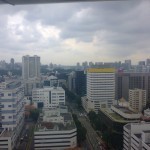
Singapore musing: Singapore in Rain and my village
Wow! At last I am in Singapore, the fabled city. Seating comfortably in my hotel room and looking at the Singapore skyline with a warm cuppa of tea. As I am looking out a nice drizzle of rain engulfs the city .I am looking out fascinated by the rain as always.
As I am looking out suddenly I recall my time spent at our ancestral village in India. I am surprised. There can be no connection between the ultramodern city of Singapore and Mhangrun (Pronounced as Mhaang-roon).
In fact Mhangrun is a tiny village not even mentioned on Google .It lies about 150 miles from Bombay (Mumbai) on a rocky outcrop surrounded by barren rocky hills. It consists of Few houses clustered around what you may call the main street .Add another few houses scattered nearby and you cover the whole village. Most of these are empty as people have left for Bombay to have better life. Mostly the elderly are left with few women and children. Our former house was probably the largest house right in the centre of the village. It was a massive two storied mud and brick structure with red clay tiles on the sloping roof. There were neither any shops nor any vehicles barring an odd bullock-cart on the middy street as far as I can remember.
I had gone there just a couple of times in my childhood. The last time I went there my grandma recalled how she hated those rocky hill in the backdrop constantly visible to her from the kitchen window where she spent most of her time. She came to this rather desolate place from a green nice town of her parents nearer the coast after her marriage at a young age of 12 .She recalled how she used to constantly used cry at the site of those hills, how bad the weather was. It used to be scorching hot in the summer, cold in winter and heavy rains in the monsoon. It seems it was a place of extremes. No wonder the village looked so empty. Probably my grandparent’s family stayed there as they owned most of the land around.
As you walk to the end of the main street, which will happen pretty quickly you see a narrower winding path leading to a small hillock. A small square building is standing with pyramidal roof covered with tiles which were red once upon a time but now black with patches of dried grass and moss on them. There is no door. If you walk in you will see three statues of gods .very roughly cut, coated with red vermillion paste and looked really scary to a small child. This is the village deity or the “Vetaal” (Literally means king of ghosts) as they call it. Just as you come out you will see couple of most handsome champak tree (Also called Frangipani or Pagoda tree which is species of Plumeria )I have ever seen with a crown of white flowers and very few leaves. How they survive in such an extreme climate is a wonder.
If you take a long walk down and go towards a winding path that takes you near the river flowing deep inside the deep gorge cut in to the rock over millions of years. Surrounding area is mostly barren except a small temple .This is the famous “Walane Kund” and I was told an interesting myth associated with it.
If you carefully come near the edge of the gorge you can look at the deep water 40-50 feet below flowing so slow that it appears almost stagnant. If you have some rice flakes and drop it you will see huge fishes jumping out of dark water for it. But be careful to throw further. This is because of this strange story.
It was said that each time you offer rice flakes down the gorge successively bigger fishes will come out of water. You are not supposed to offer them beyond six times .But a lady from other some other village got married to a man from Mhangroon .After marriage she came to “Doha of Walne” with her husband .She expressed the desire to see the fishes. The husband offered rice flakes .First time smaller fishes jumped out and progressively become bigger .As he offered rice flakes for the sixth time at his wife’s insistence fishes as large as a man jumped out to eat them. His wife now asked him to do an encore for the seventh time to which the husband refused. A quarrel ensured as is the usual case between a husband and wife. Ultimately the man agreed but he tied himself to the rock temple and asked his wife to do whatever she pleases. She went ahead and offered rice flakes for the seventh time. And nothing happened for a moment. Then there was a huge whirlpool formed over the water and a huge fish that came out and sucked out everything on the bank including the wife. The man was saved by the strength of his rope.
Though I was a child at that time I was really old enough not to believe in this story. But I could not muster the guts to offer rice fakes beyond the prescribed limit. The gorge really looked deep and water seemed bottomless. While growing up I came across similar stories associated with many places in the world.
Now seating here in the midst of one of the most modern cities in the world it seems incredulous that I recall this story. Then I looked out at the rain and the city visible through the haze. The rain and haze looked so similar to my small village. I realized how humanity is bounded by this bounty of god whether in a small remote village or the most modern city.
Thank you for reading and commenting. Please enter the Inspiration Travel Writing competition and tell your story.
The post Singapore musing: Singapore in Rain and my village appeared first on We Said Go Travel.
We Said Go Travel
We Said Go Travel is a global community of over sixteen hundred writers with articles from every continent.
Stories are shared with photos and video from a perspective of the transformative power of travel. We Said Go Travel has hosted live and online events as well as travel writing contests around the world. ...more
- Lisa Niver's profile
- 57 followers


